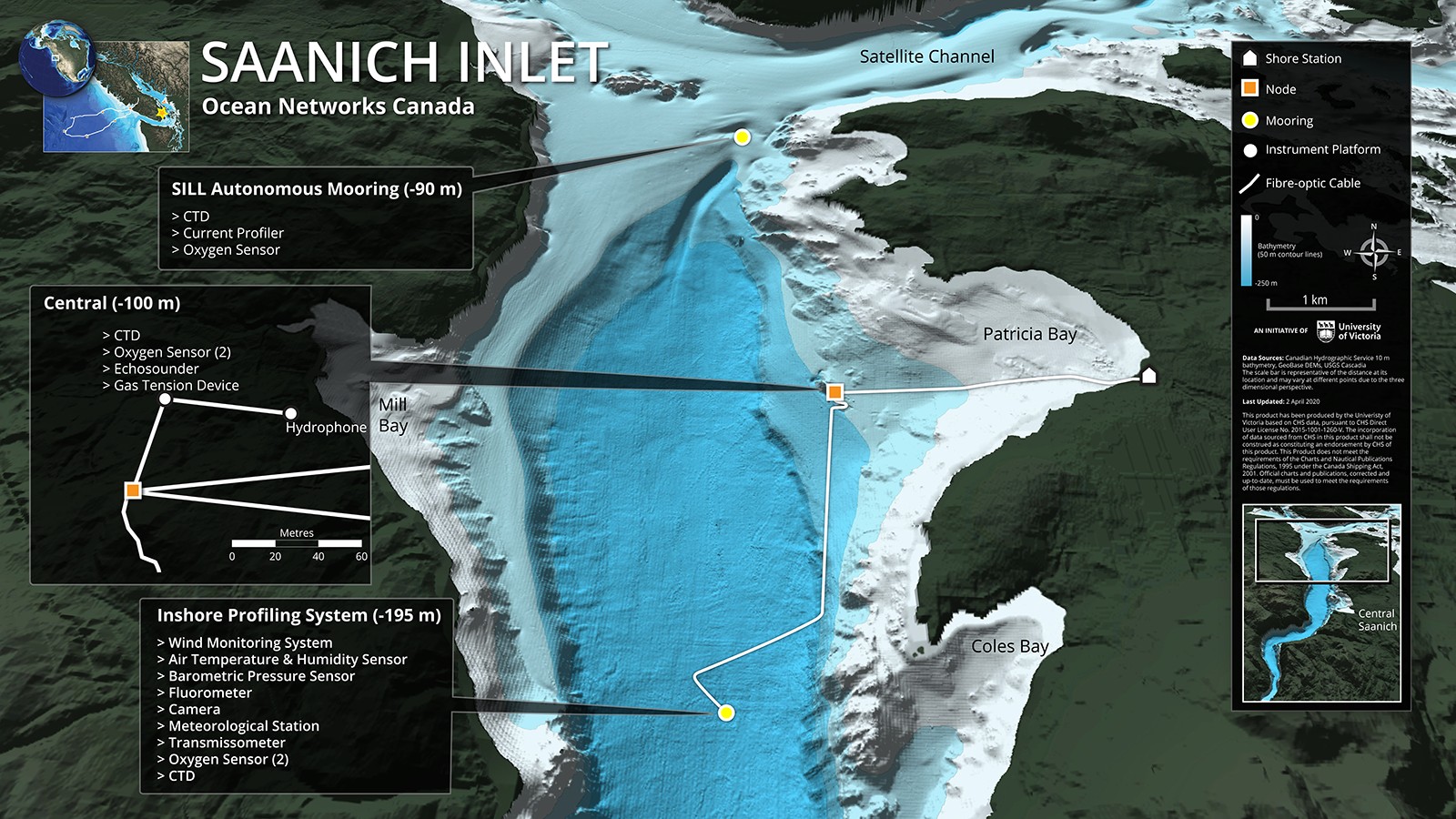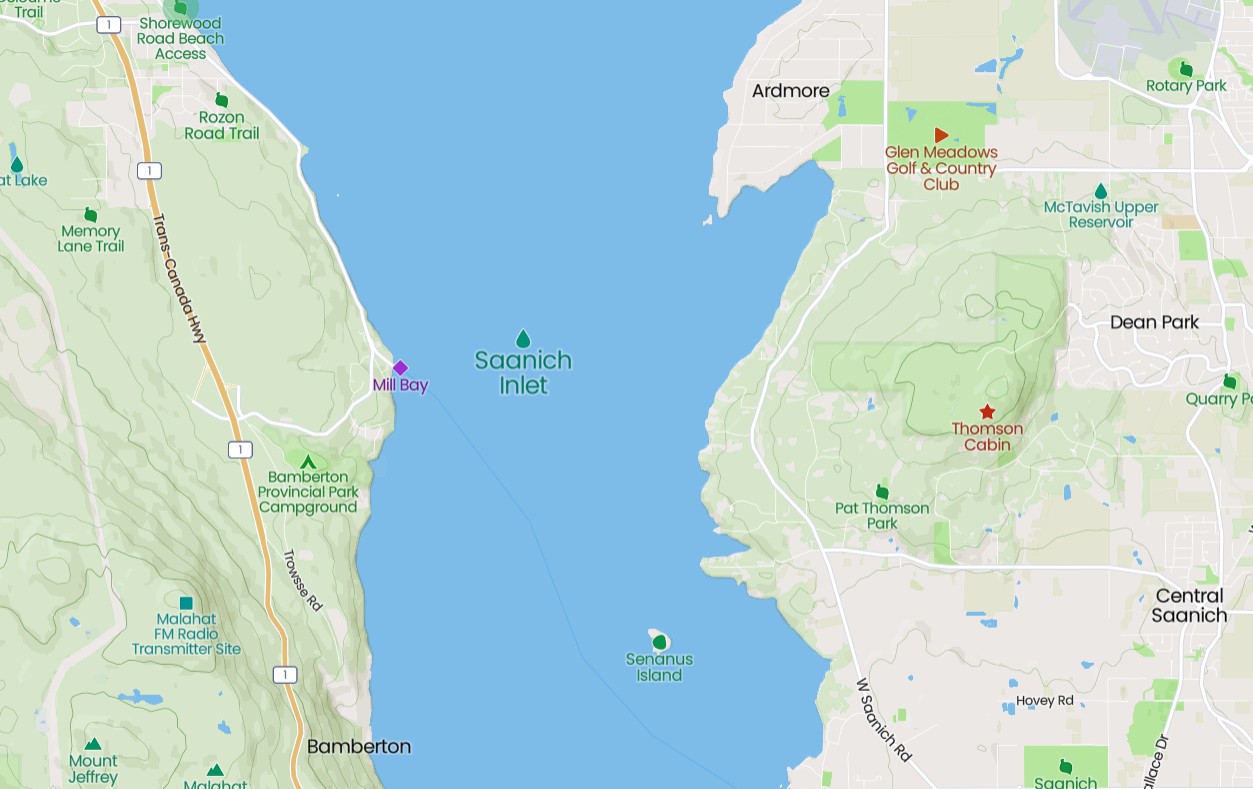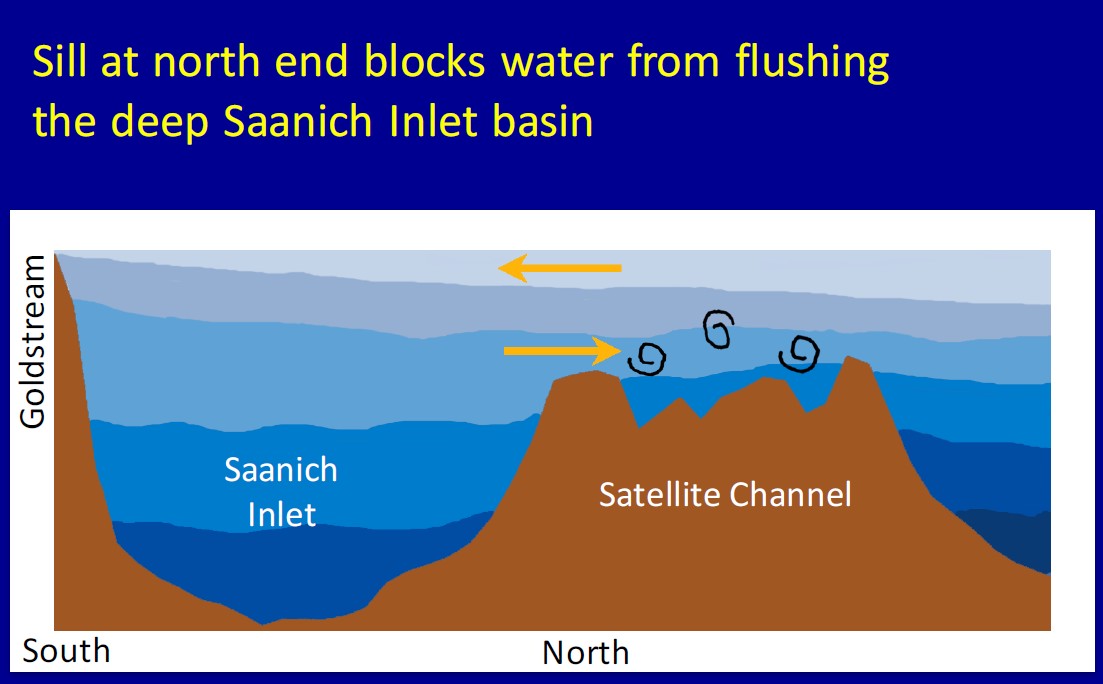Map Of Saanich Inlet
Saanich Inlet is a body of salt water that lies between the Saanich Peninsula and the Malahat highlands of Vancouver Island, British Columbia, Canada.
Located just northwest of Victoria, the inlet is 25 km (16 mi) long, has a surface area of 67 km2 (26 sq mi), and its maximum depth is 226 m (741 ft).
It extends from Satellite Channel in the north (separating Salt Spring Island from the Saanich Peninsula) to Squally Reach and Finlayson Arm in the south.
The only major tributary feeding the inlet is the Goldstream River.
The inlet has been of importance as a fishery to the Malahat and Saanich First Nations for centuries, and many Indian reserves are situated on the shoreline.
Since the arrival of Europeans, the inlet has also provided a recreational and commercial fishery. It has also been popular with SCUBA divers.
For several years, a port existed on the western shore at Bamberton, servicing a cement works.
For most of the year the deep waters are anoxic, and hydrogen sulphide (H2S) is often detected near the bottom.
In the late summer and early fall, oxygenated waters from the Haro Strait and the Satellite Channel spill over into the deep basin of Saanich Inlet.




